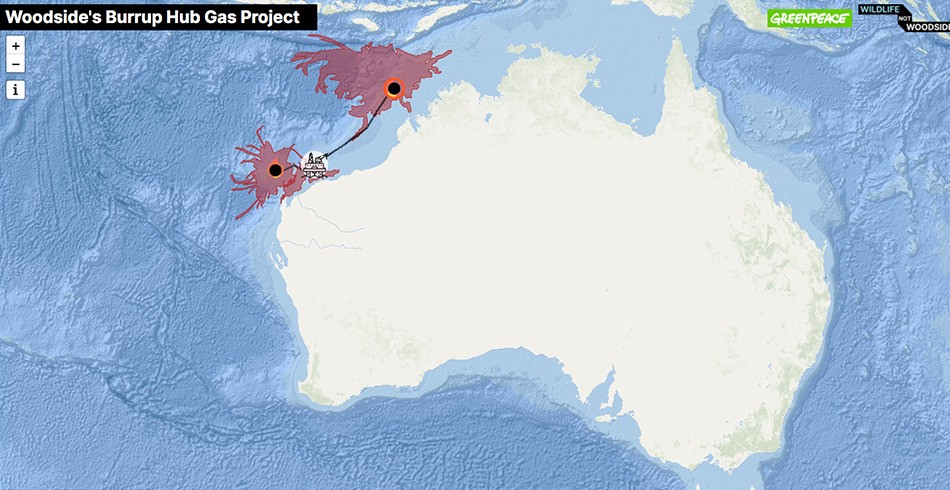The Australian Conservation Foundation Incorporated (ACF) has commenced proceedings in the Federal Court of Australia in relation to the environmental assessment of Woodside’s controversial Scarborough gas project.
The ACF is seeking an injunction to restrain offshore project activities.
According to Greenpeace, new report and never-before-seen animated spill mapping reveals the extent of the damage a spill or accident at Woodside’s controversial Burrup Hub (Scarborough and Browse gas fields) could cause, with toxic condensate (a substance similar to crude oil) travelling as far as Indonesia and the WA coastline, as well as multiple marine parks. The report alleges some of Australia’s most important ecological sites, including the largest oceanic reef and 54 threatened species, would be in the firing line.
Related article: Traditional custodians demand apology from Woodside
Greenpeace Australia Pacific head of clean transitions Jess Panegyres said the report’s findings reveal the devastating direct risk Woodside’s gas expansion plans pose to marine ecosystems.
“Woodside’s aggressive plans to expand the Scarborough and Browse gas fields pose an unacceptable risk to our climate and to Western Australia’s vulnerable marine ecosystems. Woodside’s own data reveals an accident at Browse would release millions of litres of gas and condensate, a substance similar to crude oil, spreading hundreds of kilometres along the West Australian coast, hurting local communities and important industries such as tourism,” she said.
“Some of our most important marine ecosystems, like Scott Reef, would be seriously damaged by an accident at Browse. Looking at Scarborough and Browse together, 54 threatened animal species such as the pygmy blue whale, sawfish and endangered sea turtles would be caught in the crossfire. The project places multiple marine parks at risk, including the World Heritage-listed Ningaloo Marine Park.”
“Woodside has a history of poor infrastructure maintenance and a haphazard approach to mitigating risk, with a number of accidents and malfunctions at its offshore sites in recent years. Woodside’s damning track record and the devastating environmental and economic fall out from an accident at the Burrup Hub makes it simply too risky to proceed.”
Related article: Woodside faces investor backlash over climate strategy
Woodside denies these claims.
A spokesperson for the oil and gas giant said, “The Scarborough Project has been the subject of rigorous environmental assessments by a range of regulators including the National Offshore Petroleum Safety and Environmental Management Authority, the Commonwealth Department of Agriculture, Water and the Environment and the Western Australian Environmental Protection Authority.”
Woodside CEO Meg O’Neill said, “The Scarborough Project is underway and proceeding to schedule after receiving all primary environmental approvals. The project will deliver significant local and national benefits in the form of employment, tax revenue and reliable gas supply in the energy transition for decades to come.”
“Woodside will vigorously defend its position in these proceedings.”







